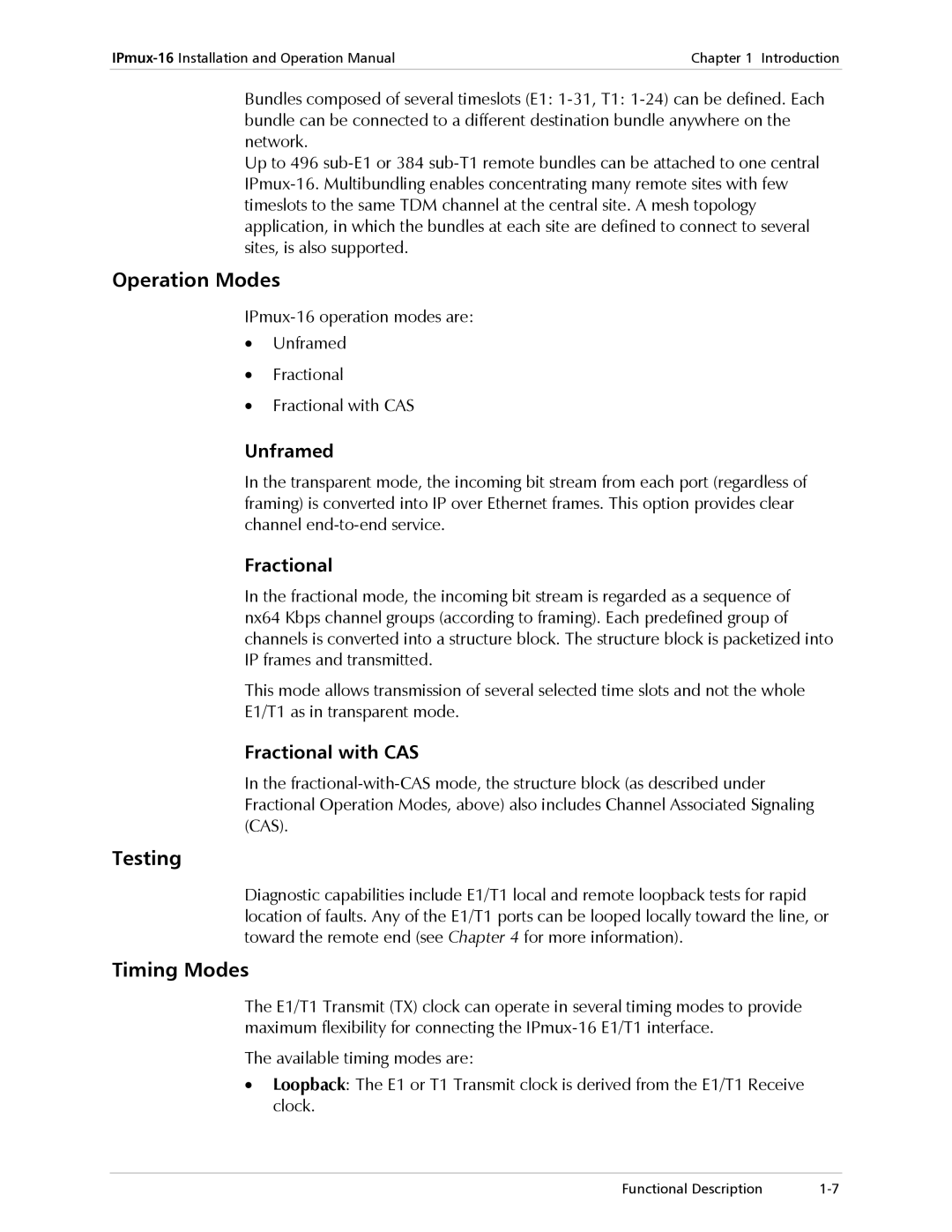Chapter 1 Introduction | |
|
|
Bundles composed of several timeslots (E1:
Up to 496
Operation Modes
•Unframed
•Fractional
•Fractional with CAS
Unframed
In the transparent mode, the incoming bit stream from each port (regardless of framing) is converted into IP over Ethernet frames. This option provides clear channel
Fractional
In the fractional mode, the incoming bit stream is regarded as a sequence of nx64 Kbps channel groups (according to framing). Each predefined group of channels is converted into a structure block. The structure block is packetized into IP frames and transmitted.
This mode allows transmission of several selected time slots and not the whole E1/T1 as in transparent mode.
Fractional with CAS
In the
Testing
Diagnostic capabilities include E1/T1 local and remote loopback tests for rapid location of faults. Any of the E1/T1 ports can be looped locally toward the line, or toward the remote end (see Chapter 4 for more information).
Timing Modes
The E1/T1 Transmit (TX) clock can operate in several timing modes to provide maximum flexibility for connecting the
The available timing modes are:
•Loopback: The E1 or T1 Transmit clock is derived from the E1/T1 Receive clock.
Functional Description |
